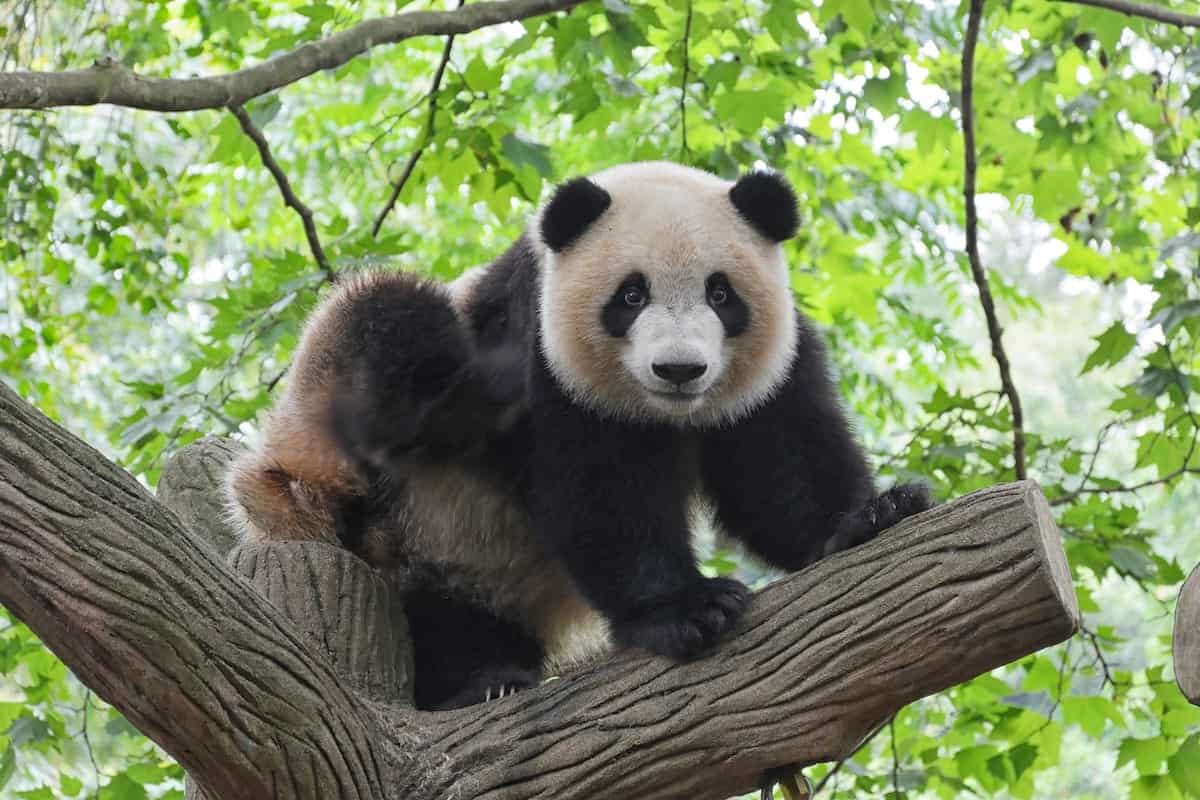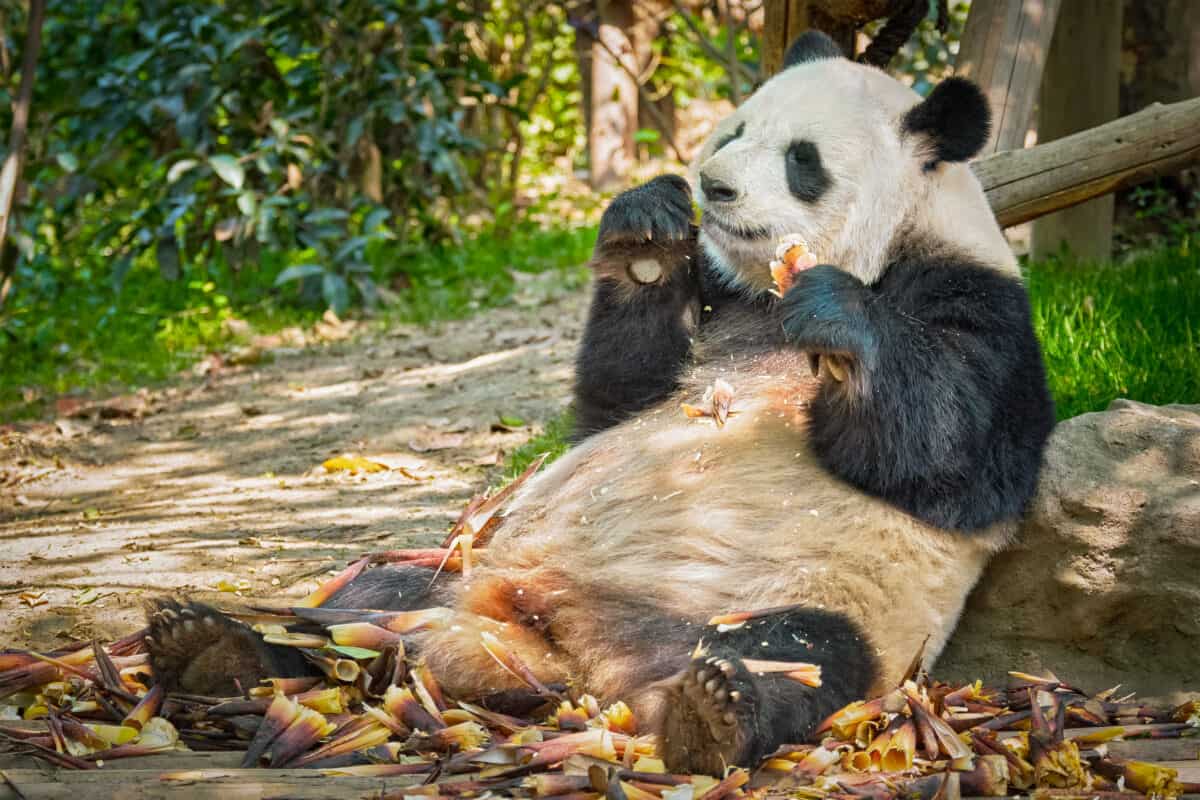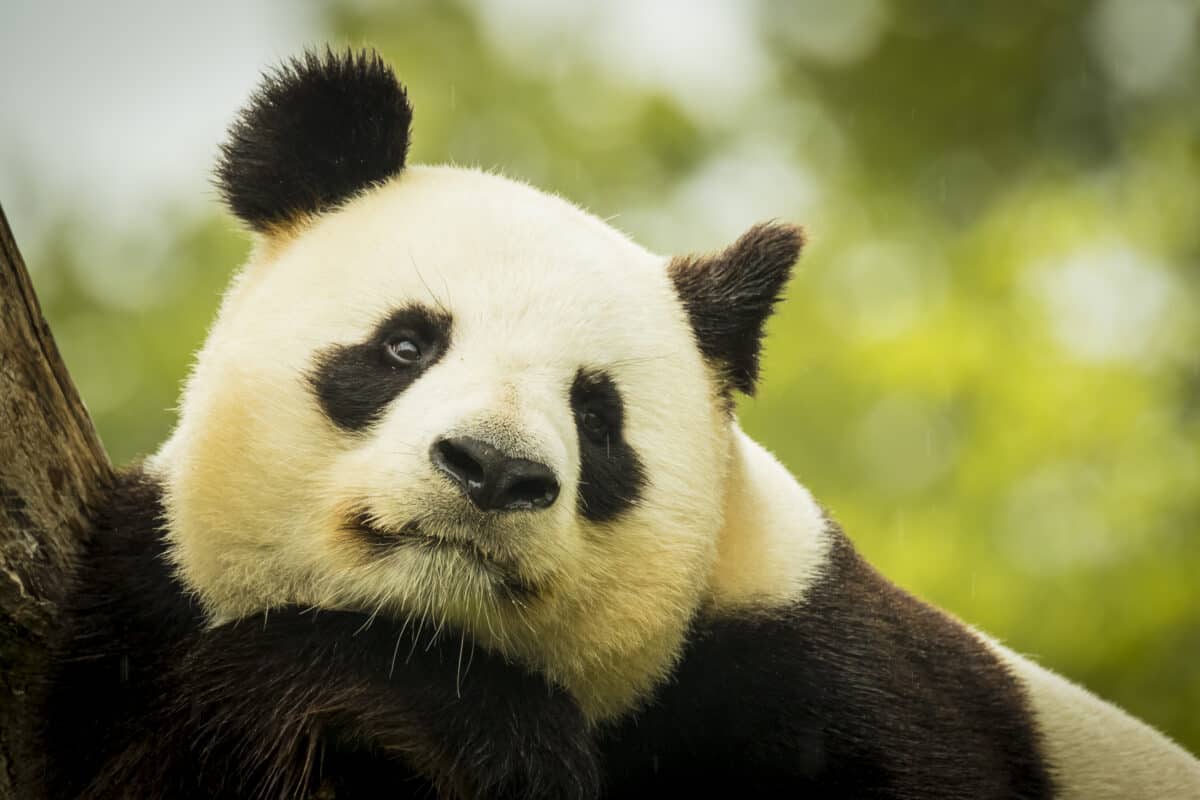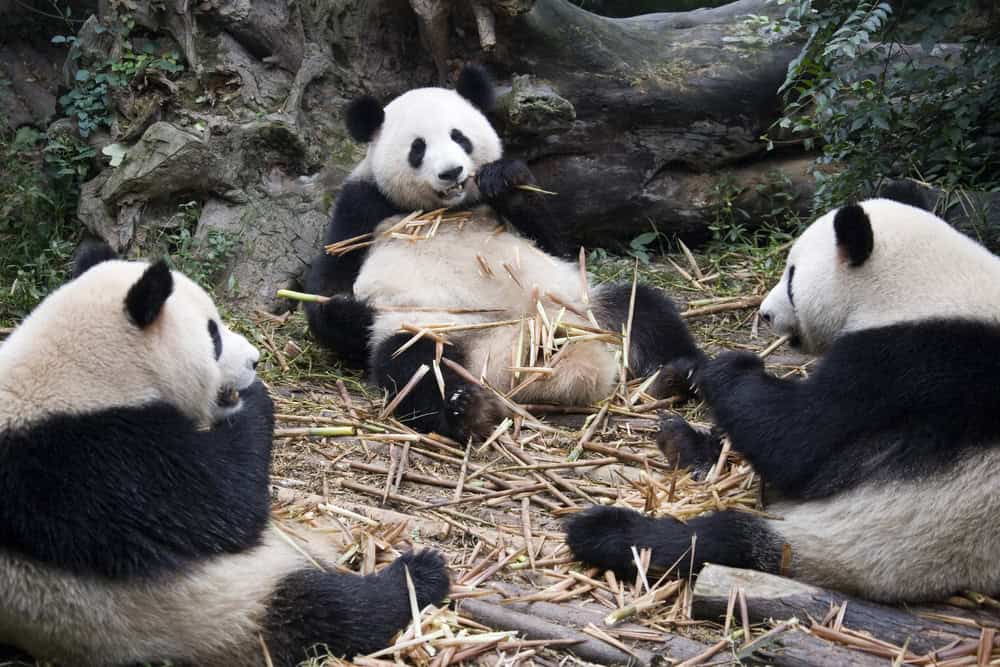Despite sharing the “panda” name, red pandas and giant pandas are remarkably different animals with unique characteristics, behaviors, and evolutionary histories. While both species face conservation challenges and captivate animal enthusiasts worldwide, these two beloved mammals diverge in numerous fascinating ways. This comprehensive comparison explores twelve key differences between these iconic species, from their taxonomic classification to their dietary preferences and physical adaptations.
Taxonomic Classification

One of the most fundamental differences between red pandas and giant pandas lies in their taxonomic classification. Giant pandas (Ailuropoda melanoleuca) belong to the Ursidae family, making them true bears related to species like the black bear and grizzly bear. Red pandas (Ailurus fulgens), on the other hand, belong to their own unique family, Ailuridae, and are the only living representative of this taxonomic group. For many years, scientists debated where to place red pandas in the mammalian family tree, with some suggesting connections to raccoons or mustelids. Modern genetic research has established that red pandas represent a distinct evolutionary lineage within the superfamily Musteloidea, separate from both bears and raccoons, though more closely related to the latter group. This taxonomic distinction represents millions of years of separate evolutionary development.
Size and Physical Appearance

The size disparity between these two species is immediately apparent. Giant pandas are substantially larger, weighing between 220-330 pounds (100-150 kg) and standing about 2-3 feet (60-90 cm) tall at the shoulder when on all fours. Their body length typically ranges from 4-6 feet (120-180 cm). In stark contrast, red pandas are much smaller, weighing only 8-14 pounds (3.5-6.5 kg) and measuring about 20-25 inches (50-64 cm) in body length, with an additional 11-23 inches (28-59 cm) of tail. Red pandas more closely resemble raccoons or small foxes in their build and size, while giant pandas have the unmistakable robust build characteristic of bears. This significant size difference affects nearly every aspect of their biology, from habitat utilization to feeding strategies.
Habitat and Geographic Range

While both species inhabit mountainous regions of Asia, their specific geographic distributions and habitat preferences differ significantly. Giant pandas are endemic to south-central China, primarily in the provinces of Sichuan, Shaanxi, and Gansu, where they inhabit broadleaf and coniferous forests with dense bamboo understories at elevations of 5,000-10,000 feet (1,500-3,000 meters). Red pandas have a broader geographic range, extending across the eastern Himalayas, including parts of Nepal, India, Bhutan, Myanmar, and southern China. They typically inhabit temperate forests with dense bamboo understories at elevations of 6,000-12,000 feet (1,800-3,600 meters). The red panda’s distribution overlaps with giant pandas only in parts of China’s Sichuan province. These distinct but overlapping ranges reflect the species’ different evolutionary histories and ecological adaptations.
Diet and Feeding Habits

Both pandas are bamboo specialists, but their diets and feeding strategies show important differences. Giant pandas are almost exclusively bamboo eaters, with bamboo constituting approximately 99% of their diet. They consume massive quantities—up to 40 pounds (18 kg) daily—to extract sufficient nutrition from this fibrous plant. Their digestive system remains carnivore-like despite their herbivorous diet, lacking specialized adaptations for processing plant material efficiently. Red pandas, while also primarily bamboo eaters with bamboo comprising about 85-95% of their diet, supplement their nutrition more regularly with other foods, including fruits, acorns, roots, eggs, insects, and occasionally small mammals or birds. They consume only about 2-4 pounds (1-2 kg) of bamboo daily, focusing on the most nutritious parts like tender shoots and leaves. These dietary differences reflect their size disparities and separate evolutionary adaptations to a bamboo-centric diet.
Physical Adaptations for Feeding

Both pandas have evolved specialized adaptations for handling and processing bamboo, but these adaptations differ significantly between the species. Giant pandas possess a unique “pseudo-thumb”—an enlarged wrist bone (the sesamoid) that functions as an opposable digit, allowing them to grasp bamboo stems effectively. Their massive jaw muscles and flat molars are adapted for crushing tough bamboo stems. Red pandas have semi-retractable claws that aid in climbing and grasping bamboo, along with specialized “false thumbs” that function similarly to those of giant pandas but evolved independently through convergent evolution. Their dentition includes specialized premolars and molars with multiple cusps designed for shearing bamboo leaves. While both species developed adaptations to process bamboo efficiently, the specific structures evolved separately in response to similar ecological pressures—a fascinating example of convergent evolution in distantly related mammals.
Coloration and Markings

The distinctive coloration patterns of these two species represent one of their most obvious differences. Giant pandas display the iconic black and white pattern that makes them instantly recognizable worldwide. Their predominantly white bodies feature black eye patches, ears, shoulders, legs, and a band across the back. Scientists believe this high-contrast pattern may serve as camouflage in their snowy and rocky habitat or potentially for communication. Red pandas, as their name suggests, sport a primarily rusty-red to deep auburn coat on their upper body, with black fur on their limbs and white markings on their face. They have distinctive white ear tufts, “tear tracks” extending from their eyes to the corners of their mouth, and a ringed tail with alternating red and buff-colored bands. Their facial markings may help deflect glare in their snowy habitat, while their reddish coloration provides camouflage among the reddish-brown moss and white lichens common in their forest environments.
Reproductive Behavior and Development

Significant differences exist in the reproductive strategies and developmental timelines of these two species. Giant pandas have an extremely slow reproductive rate, with females typically able to conceive for only 2-3 days per year during a brief estrus period. After a gestation of 95-160 days (including delayed implantation), females give birth to one or occasionally two extremely underdeveloped cubs weighing just 3-5 ounces (85-140 grams)—only about 1/900th of the mother’s weight. Cubs remain dependent on their mother for up to 18 months. Red pandas have a more conventional reproductive timeline, with a gestation period of approximately 114-145 days before giving birth to litters of 1-4 cubs weighing about 4-5 ounces (110-130 grams). Red panda cubs develop more rapidly than giant panda cubs, becoming independent after about 8 months. Both species exhibit delayed implantation (embryonic diapause), but the overall reproductive investment and timeline differ substantially, reflecting their different evolutionary histories.
Locomotion and Activity Patterns

The movement patterns and general activity rhythms of these two species reflect their different evolutionary backgrounds. Giant pandas are primarily terrestrial and exhibit the characteristic waddle of bears when walking on all fours. Though capable of climbing trees, especially when young, adult giant pandas spend most of their time on the ground due to their substantial body weight. They are generally crepuscular (most active at dawn and dusk) or diurnal, with activity patterns varying seasonally. Red pandas, in contrast, are highly arboreal mammals that spend much of their time in trees. They are excellent climbers, using their semi-retractable claws, flexible ankles, and bushy tails for balance. Red pandas are primarily crepuscular and nocturnal, becoming most active in the late afternoon, evening, and early morning hours. When on the ground, they move with a bear-like gait, but they navigate treetops with remarkable agility, even able to descend trees headfirst like squirrels—something giant pandas cannot do.
Social Structure and Behavior

These two panda species exhibit notably different social structures and behavioral patterns. Giant pandas are predominantly solitary animals that actively avoid contact with other pandas except during the brief mating season. They communicate primarily through scent marking and vocalizations rather than direct interaction. Adult pandas maintain exclusive territories that may partially overlap, and they mark these territories with scent secretions and claw marks. Red pandas are similarly solitary in their day-to-day lives, but they demonstrate more complex social interactions and communications. They establish territories that they mark with urine and secretions from their anal glands, but these territories commonly overlap, especially between males and females. During winter, red pandas sometimes gather in small groups and may even share nests, particularly in colder regions. This difference in social flexibility likely reflects their different evolutionary histories and ecological adaptations.
Vocalizations and Communication

The communication systems of these two panda species differ substantially. Giant pandas possess a complex vocal repertoire with at least 11 distinct vocalizations, including goats, barks, honks, and the distinctive “bleat” that females use during mating season. Cubs produce high-pitched squeals to indicate distress. Additionally, giant pandas communicate through scent marking and body postures. Red pandas have a more limited vocal range but still use various sounds including hisses, whistles, and a peculiar “quack-snort” when threatened. They also emit a bird-like twitter and a high-pitched “twilling” sound during mating season. Red pandas rely heavily on visual signals and body language, including tail fluffing and specific postures. Both species use scent marking extensively, but their specific communication strategies have evolved separately to address the challenges of their respective ecological niches and social structures.
Conservation Status and Threats

Both pandas face significant conservation challenges, though the specific threats and population status differ. Giant pandas are currently classified as “Vulnerable” on the IUCN Red List, an improvement from their previous “Endangered” status. Their population in the wild is estimated at around 1,800-2,000 individuals. The primary threats to giant pandas include habitat fragmentation and loss due to agriculture, logging, and infrastructure development. Red pandas are classified as “Endangered,” with their wild population estimated at fewer than 10,000 mature individuals and declining. They face threats from habitat loss, fragmentation, poaching for their fur and the pet trade, and mortality from traps set for other animals. Climate change poses a significant threat to both species, potentially reducing the available bamboo in their habitats. While conservation efforts for giant pandas have seen some success in recent decades, red pandas have received comparatively less attention and funding despite their equally precarious situation, highlighting the disparities in conservation focus even among charismatic species.
Cultural Significance and Recognition

The cultural significance and global recognition of these two species demonstrate stark contrasts. Giant pandas have achieved unparalleled status as global conservation icons, serving as the logo for the World Wildlife Fund (WWF) since 1961 and functioning as powerful diplomatic tools for China through “panda diplomacy.” They consistently rank among the most recognizable and beloved animal species worldwide, with their distinctive appearance making them instantly identifiable across cultures. Red pandas, despite their charm and endangered status, have significantly lower global recognition. They lack the international diplomatic significance of giant pandas and have only recently begun gaining wider public attention through social media, viral videos, and increased presence in zoos and wildlife documentaries. This recognition disparity has real consequences for conservation funding and public support, with giant pandas historically receiving substantially more resources and attention despite both species facing similar conservation challenges.
Conclusion

Despite sharing the “panda” name and a fondness for bamboo, red pandas and giant pandas represent two distinctly different evolutionary lineages that have adapted to similar ecological niches through convergent evolution. Their differences span virtually every aspect of their biology, from taxonomy and physical appearance to behavior and reproductive strategies. The giant panda’s bear lineage has resulted in a large-bodied, ground-dwelling specialist with tremendous public recognition, while the red panda’s unique evolutionary path produced a smaller, more arboreal creature that maintains greater dietary flexibility. Both species face significant conservation challenges in their native habitats, though with different levels of global attention and support. Understanding these differences not only provides fascinating insights into evolutionary biology but also highlights how similar ecological pressures can shape different species in convergent ways, resulting in superficially similar adaptations that mask profound biological differences.
- The Largest Wildfire to Ever Burn in the US - August 9, 2025
- The Secretary Bird A Raptor That Hunts on Foot - August 9, 2025
- 10 Dog Breed Restrictions That Stir Controversy in U.S. States - August 9, 2025

